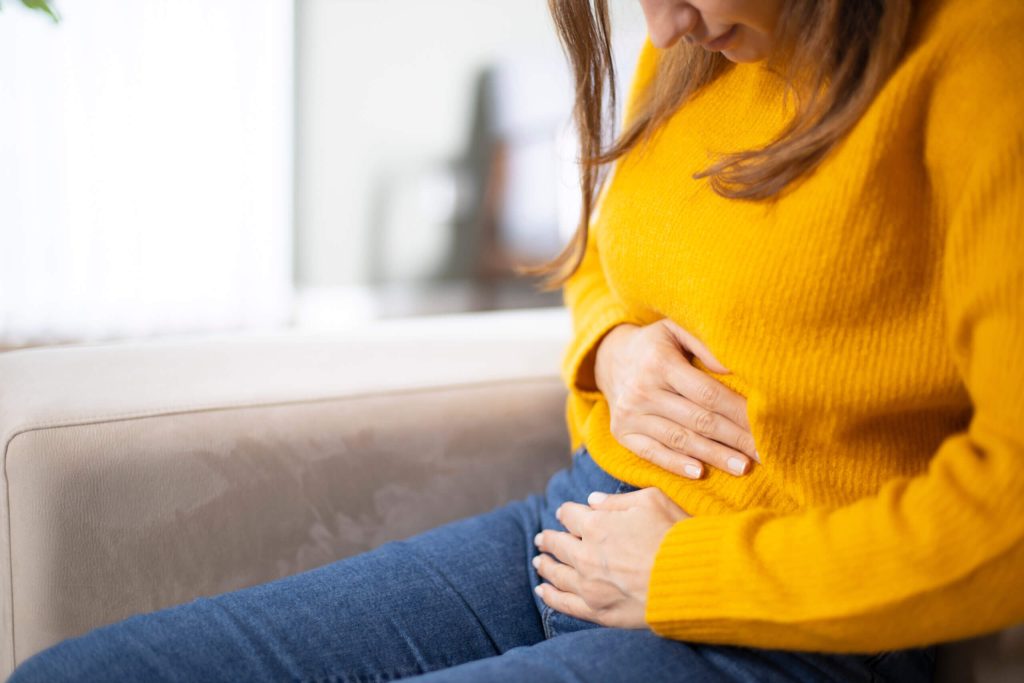Childbirth is often described as one of the most incredible experiences a person can undergo, but it’s no secret that it also involves significant physical challenges. Throughout pregnancy and delivery, your body undergoes remarkable changes to accommodate your growing baby and bring them into the world. However, these changes can lead to discomfort, including postpartum groin pain.
If you’ve been experiencing groin pain after birth, you’re not alone, and there are effective ways to find relief through evidence-based and natural physical therapy methods.
Common causes for groin pain after birth
During pregnancy, your body prepares for childbirth by loosening ligaments, shifting bones, and stretching muscles to make space as your baby grows and is born. After delivery, these changes, combined with the physical strain of labor and healing from childbirth-related injuries, can contribute to groin pain postpartum.
The list of “normal” postpartum symptoms is lengthy and may or may not apply to everyone’s experience. There are several potential causes for postpartum groin pain, and the experience often varies from one person to another. Here are some common reasons why you might be feeling pain in your groin after giving birth:
C-section recovery and complications
Groin pain after a C-section isn’t uncommon. While the surgery is designed to minimize damage, the incision and subsequent scar tissue can create tightness, strain, or nerve-related pain throughout your pelvis and groin. In particular, nerves affected during the procedure might result in sharp or shooting sensations in the groin area during the healing process.
Perineal tears
For those who had a vaginal delivery, perineal tears or episiotomies can cause soreness around the groin. These injuries may require stitches and time to heal, leading to localized pain that intensifies with movement or pressure.
Muscle weakness or injury
Pregnancy and childbirth can weaken the muscles in your pelvic floor and surrounding areas. This can sometimes result in tenderness or groin discomfort, especially when standing, walking, or carrying heavy objects.
Uterine cramping (afterpains)
Your body works around the clock after giving birth to return your uterus to its pre-pregnancy size, which can cause cramping sensations that radiate through the pelvic and groin area.
Separation of pubic bones (Symphysis pubis dysfunction)
The separation of pubic bones during labor is necessary for a healthy birth, but can result in discomfort or instability in the pelvis for weeks afterward. This may cause groin pain, particularly during certain movements or while bearing weight.
Pelvic ligament instability
The pelvic girdle ligaments, which loosen to facilitate childbirth, may take time to tighten again, potentially leading to groin pain when walking or engaging in physical activity postpartum.
Because everyone’s experience with childbirth is different, taking note of where your pain is located and its characteristics—whether dull or sharp, persistent or only arising in certain positions—can provide valuable insights into its cause and guide you to an effective treatment with your healthcare providers.
Will post-partum groin pain go away on its own?
Many types of groin pain after birth heal and go away as part of the body’s natural recovery process. However, that doesn’t mean you have to simply endure any kind of pain because your body will eventually heal. Seeking professional care for groin pain after birth can help promote faster, more effective healing.
While some discomfort may seem “normal,” persistent or severe groin pain postpartum may indicate an issue that requires attention. Advocating for yourself in postpartum appointments and being specific about your symptoms can help you and your caregivers address the root causes of your symptoms.
How physical therapy treats post-partum symptoms
Physical therapy is an effective, evidence-based way to address postpartum groin pain and support your recovery. It provides a holistic approach to care that not only treats symptoms but also empowers you with tools for long-term well-being. Here are just a few of the ways physical therapy can help with groin pain after a C-section or vaginal birth:
Diaphragmatic breathing
Physical therapy-based breathing exercises focus on strengthening your core and pelvic floor while promoting relaxation and better oxygen intake. Diaphragmatic breathing can also help reduce tension and gradually rebuild stability in the pelvic area.
Gentle, targeted muscle strengthening
Targeted exercises provided by a physical therapist can help your body rebuild strength in the pelvic floor and groin muscles. This helps alleviate pain and improves overall stability and mobility.
Postural and movement recommendations
Having poor posture after giving birth (hello, endless hours of feeding and holding!) can exacerbate groin and pelvic pain. A physical therapist can guide you in adjusting your posture or movements to reduce strain and prevent future discomfort throughout your body.
External support (braces or compression bands)
Sometimes external support can be used to promote healing and provide stability to sensitive or weakened areas. Compression bands and braces can relieve pelvic pressure and support weakened muscles as they recover postpartum.
No matter what’s causing your groin pain, physical therapy treatments are tailored to your specific needs, ensuring compassionate care that takes your unique childbirth experience into account.
Start your journey to healing and full recovery after childbirth
Postpartum groin pain can feel overwhelming, especially on top of figuring out your entirely new life with a new baby. But you don’t have to endure the discomfort alone. With the right guidance, compassionate care, and tailored treatments, recovery is entirely within reach.
If you’re struggling with groin pain after birth or groin pain after a C-section, our talented team at Continuum Wellness in Apache Junction, AZ, is here to help. Call our clinic or request an appointment with our team online today to get started as soon as possible.
